Cuban Trogon
Content for this page researched and created by W. E. Hamilton
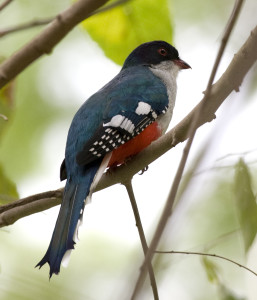
Photo by L. Gooch, Wikimedia Commons
Trogons are one of the archetypal birds of the tropics (Johnsgard and Schmitt). They inhabit tropical forests all around the world and are among the most colorful birds in the world displaying intensely colored, often iridescent feathers (de los Monteros). The name “trogon” comes from the Greek word for “gnawer” as many of the species have serrated edges on the bills which they use to chew their food and dig out their tree cavity nests (Johnsgard and Schmitt). Trogons have no closely related, living bird relatives, and their evolutionary origin probably goes back to Africa (de los Monteros) possibly when that continent was still part of the ancient supercontinent Gondwana (Moyle).
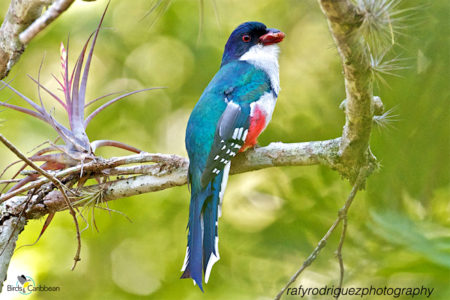
The Cuban trogon (Priotelus temnurus) Is endemic to the island of Cuba (Web Site Of Everything). “Endemic” means that it is a native species that is found naturally nowhere else in the world. It is also the national bird of Cuba whose plumage resembles the colors of the Cuban flag (Neotropical Birds On-line).

Photo by J. Oldenettal, Flickr
The Cuban trogon is ten to eleven inches long with a white throat and chest, a red belly, blue crown, and a green back. Their wings and tails have blue, black, green and white patterns (A Guide to the Birds of the West Indies)(Garrido and Kirkconnell). Males and females are similar in size and coloration while juveniles are similar in size to adults but duller in color (Forshaw). The Cuban trogon perches in a distinctive, upright posture (A Guide to the Birds of the West Indies) and has the unique “trogon toe pattern” of the first and second toes pointing backwards and the third and fourth toes pointing forward a design that allows very efficient perching on branches and tree trunks (Johnsgard and Schmitt). Its tail is distinctive from other trogon species in that it is broadly flared (The National Bird of Cuba). The Cuban trogon is not a very active bird and tends to stay perched in one place for long period of time (Vaurie).
The Cuban trogon is most often spotted in pairs (Forshaw) but seldom joins mixed flocks of other species of birds (Hamel and Kirkconnell). It is an active, energetic singer (Vaurie), and its song , although variable, typically forms the onomatopoeic representation of its common name (“tocororo”) (song sounds like “toco-toco-tocoro-tocoro”)) (National Bird of Cuba) (Neotropical Birds Online).
Photo by D. Sherony, Wikimedia Commons
The Cuban trogon is a common bird throughout the island of Cuba (Kirwan, et al.) but is especially abundant in wooded hillsides (Danforth) especially in the deep woods rather than in the forest edges (Kirwan and Kirkconnell). It is found in both wet and dry habitats and in both evergreen and deciduous forests (Planet of Birds). Although it is quite abundant on the main island of Cuba it is not found on the smaller, northern cays (“islands”) (Wallace).

There are two described sub-species of P. temnurus: P.temnurus teminurus (on Cuba proper) and P. temnurus vescus (on the Isle of Youth). “Vescus” has smaller wings, a shorter tail, and shorter toes, but a larger bill) (Johnsgard). The population of the Cuban trogon is thought to be stable (although no detailed studies have been conducted). It is classified as a species of “least concern” relative to its possible threat of extinction (Bird Life International).
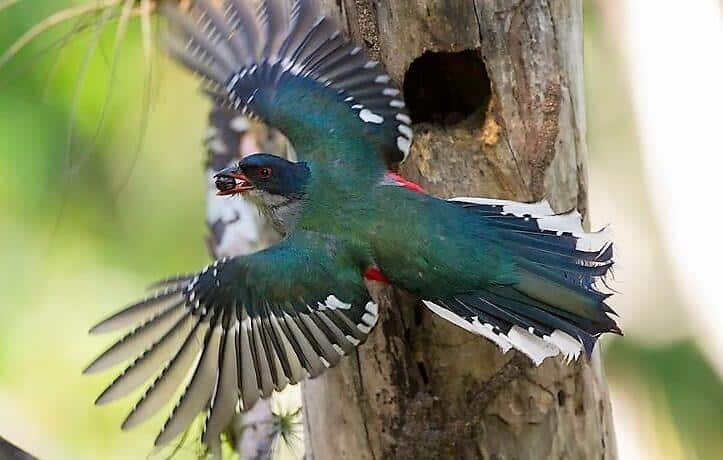
Photo by A. Hopkins, Flickr
Past conversion of forest into agricultural ecosystems (especially the establishment of sugar cane plantations) negatively affected Cuban trogon populations (Forshaw). It is considered to be an indicator species for the health of a tropical forest ecosystem (Cuba Explorer) and is considered by the indigenous people of Cuba to be a harbinger of good luck and good news (Cuba Explorer). Cuba celebrated both the Cuban trogon and the island’s indigenous people (the “Taino”) on a 1987 stamp (Cuba Explorer).
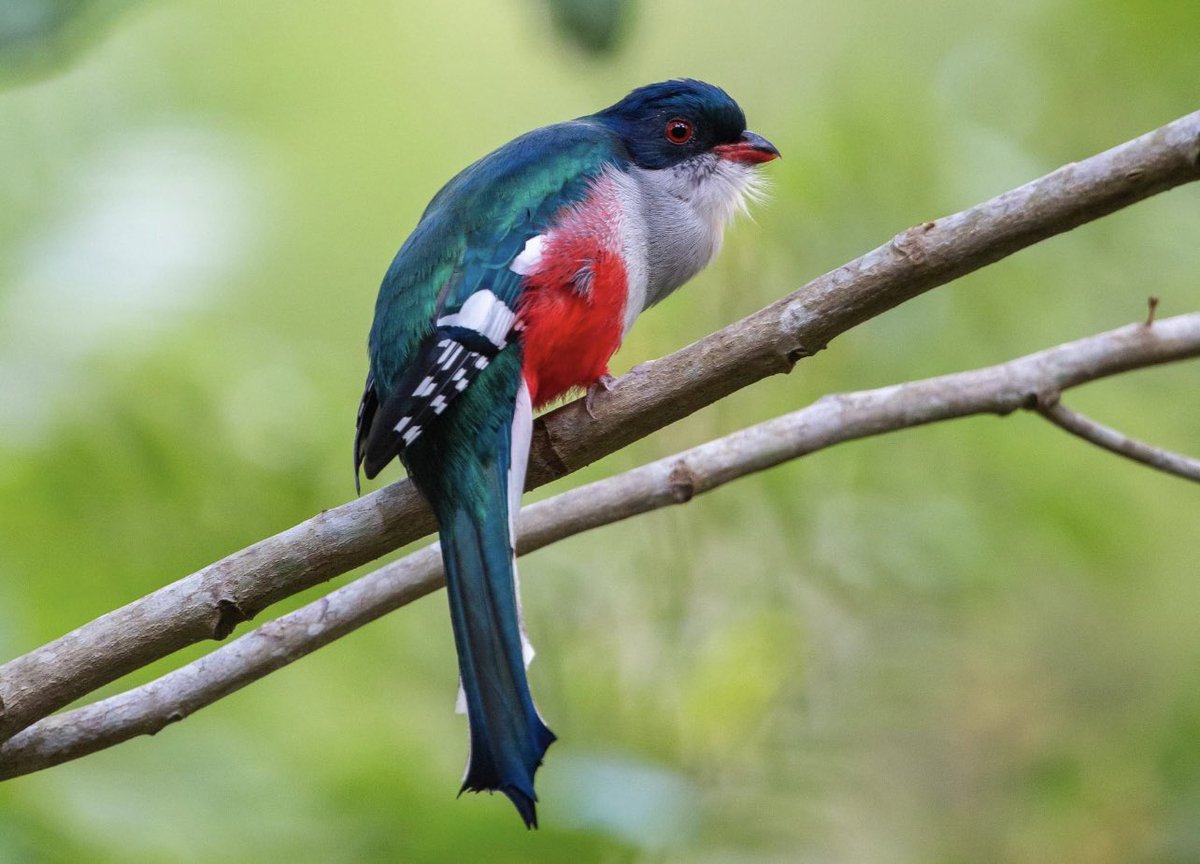
Photo by M. Gringo, Flickr
Cuban trogons eat various kinds of fruits, insects and berries and frequently grab their food in flight (Johnsgard). They also hover at flowers as they feed on nectar (Planet of Birds). Parent Cuban trogons feed their nestlings masticated versions of their wide variety of foods (Cuba Explorer). The Cuban trogon’s tongue is quite long (10 mm or more ) and has a bifurcated tip (Clark). It uses its tongue to explore flowers and to capture some of its insect prey. Internally it has a large gizzard (where food is both stored and mechanically digested) but no crop (a non-contracting sac for food storage seen in many bird species) (Clark).
Although its ability to hover is a most impressive aspect of its flight repertoire, it is, overall, a fairly clumsy flyer typically capable of only short and “noisy” flights (A Guide to the Birds of the West Indies).
The Cuban trogon does not build a nest (A Guide to the Birds of the West Indies). Instead it utilizes either natural tree holes (formed by rot in older trees) or abandoned holes of woodpeckers as incubation sites for its eggs (Cuba Explorer). This species, then, has an absolute requirement for older, sometimes dead, trees in their habitat (Neotropical Birds Online). It is seldom able to reuse a tree hole because of rot and tree or limb collapse (Johnsgard and Schmitt). Further, the Cuban trogan nests later in the Spring/Summer season than many similar bird species in Cuba possibly so that they can have access to freshly used and just abandoned woodpecker holes (Forshaw).
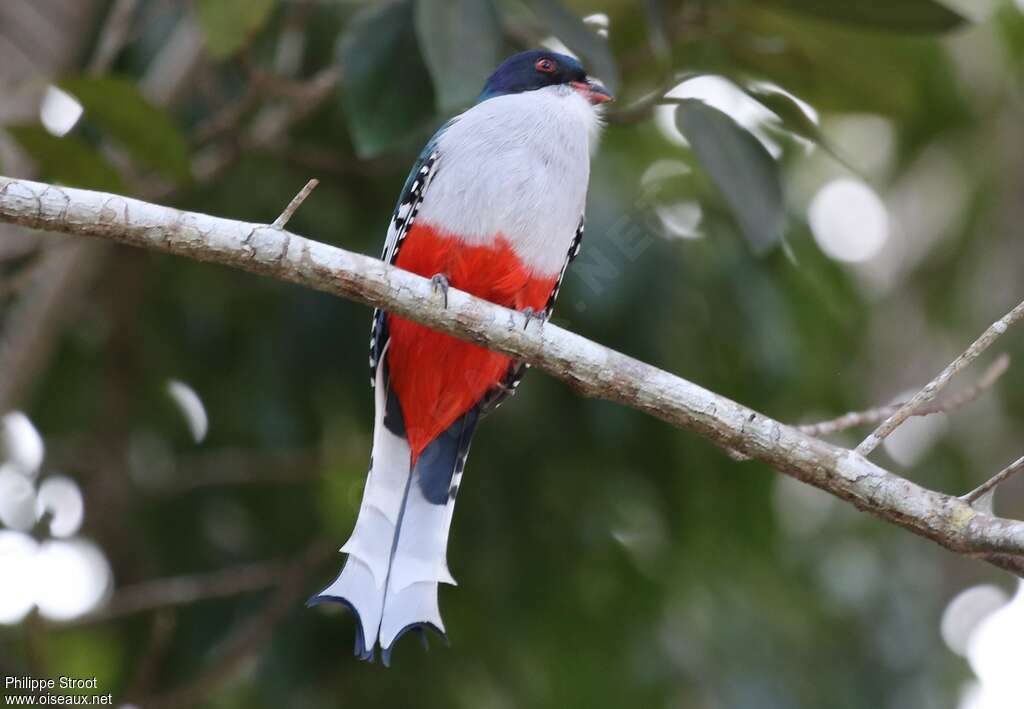
The Cuban trogon does not migrate (in fact it does not leave the island of Cuba!) but it may move seasonally between forest, shrub land and riparian habitats (Planet of Birds).The normal clutch for the Cuban trogon is three to four eggs that are white to white with a bluish tint (Froshaw)(Garido and Kirkconnell). Both parents are active in feeding the nestlings, but few details about the duration of incubation, length of nurturing or nestling development, or the timing of fledging have been determined (Bird Life International)(Forshaw).
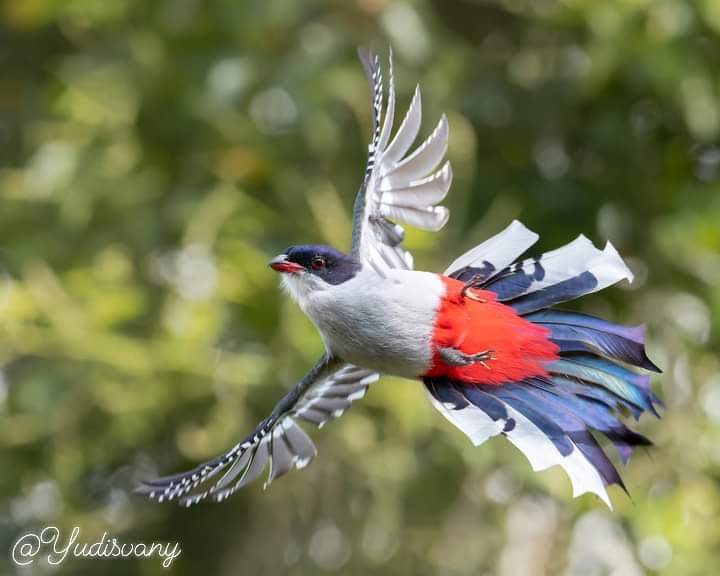
An unusual anatomical feature of the Cuban trogon is its extensive intestinal section called the caecum (or “cecum”). The Cuban trogon has a very long caecum (36 mm) which makes up 20% of its intestinal length (Clark). This is the highest percent of caecum seen in any trogon species (DeW). The caecum in a bird is typically represented as two blind sacs or dilations off of the lower intestine just at the beginning of the rectum (The Wonder of Birds). The caeca are thought to be digestion chambers in which resistant food molecules (like celluloses in leaves) can be broken down by bacteria of the bird’s microbiome (The Wonder of Birds). Why a bird species that eats so little cellulose would have such an extensively developed caecum, though, is not easily explained.

